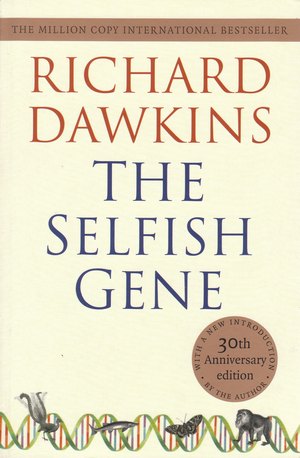Thirty-six years after Richard Dawkins coined the term “meme” in his brilliant and influential 1976 book The Selfish Gene, the concept of meme has itself become a meme — and a very successful one at that.
Google the term “meme” and you’ll get (by present count) about 305 million hits, including hits on three Wikipedia articles with the word “meme” in their titles. You’ll find Web sites about memes. You’ll find Web sites trying to create memes. And, God knows, you’ll find a lot of clever memes about cats.
But do you really know what a meme is? Let’s review: A meme, according to Dawkins, is the cultural equivalent of a gene, an idea that replicates from brain to brain the way that genes replicate from individual genome to individual genome. Any piece of information can be a meme, but only a piece of information that slyly persuades people to pass it along to other people can be considered a successful meme. Songs can be memes. Stories can be memes. Slogans can be memes. Religions can be memes. Catchphrases can be memes. Entire books can be memes, as long as they lodge themselves in people’s minds and get passed along to become lodged in the minds of others. (I’d say that The Seflish Gene itself is a pretty damned successful meme, every ingenious page of it, even if we judge its success by the persistence of this one idea alone.)
The success of a meme, where success is defined not only by escaping from one brain and replicating in another but by driving out competing memes for similar but contradictory ideas, requires some kind of sticking power, a quality to the meme that makes it more likely to enter the cultural flow and (in the current parlance) go viral. For a song, that quality may be catchiness (“I can’t get that song out of my head!”), loveliness (“That song just makes me weep every time I hear it!”) or sheer trendiness (“I’ve gotta have that new song by Justin Bieber, mom, ’cause all my friends do! I’ve gotta!”). For a book it could be gripping excitement or extraordinary insight into the human condition (or, as in the case of the Justin Bieber song, sheer trendiness). For a skill such as knot tying or fashioning clothing out of animal hides, it may be the survival advantage it confers on the individual who knows it.
In some arenas, the criteria for the success of a meme are more rigorous. A scientific hypothesis becomes a much replicated meme by repeatedly surviving experimental attempts to disprove it, in which case it becomes a theory. In fact, a theory can be looked at as nothing more — or less — than a really successful scientific meme. Newton’s Theory of Universal Gravitation, Einstein’s Theories of Special and General Relativity, and Darwin’s Theory of Evolution through Natural Selection are memes par excellence.)
I’ve always felt that memes, as Dawkins conceived them, are more than just a metaphor. Dawkins wasn’t just saying that memes propagate themselves in a way that resembles the way that genes propagate; he was saying that they use exactly the same method. Oh, sure, the mechanics are different, but that’s only because the media through which they propagate are different. Genes propagate in bodies and spread via the transfer of sperm from testes to ovaries. Memes propagate in brains and spread via the transfer of words from mouth to ear (or from computer display to eye). But both are forms of natural information transmission — genes, after all, are nothing more than information written in a molecular language — and they’re even subject to exactly the same kind of natural selection. Memes compete with other memes for the limited amount of mental and cultural space in which ideas may thrive.
In fact, memes can be thought of as the next stage in the evolution of evolution. Physical evolution — that is, evolution by genes — is too sluggishly responsive to external demands to keep up with our changing needs as a society, but memes can turn on a dime. If we learned tomorrow that the earth was about to explode, scientists would evolve a meme by the day after tomorrow telling us how the human race was going to survive. (It would probably involve putting a baby in a rocketship and sending him off to a planet where he would grow up to wear a red, white and blue suit and fly around with his cape flapping in the wind. But that’s a meme that’s been around for a very long time.)
The Selfish Gene, despite that rather pessimistic-sounding title, is about how that wonderful human quality we call altruism could have evolved despite its apparent lack of survival value. Although Dawkins discussed detailed ways in which altruism was, in fact, a much more powerful survival mechanism than it at first might seem (the most important of which is something called kin selection, which anyone with an interest in evolutionary psychology should know about), the hope that he held out for the future was the meme. Evolution may program us for such depressingly negative tendencies as racism and the desire to wage war, but cultural evolution, which operates at speeds that are blindingly fast compared to physical evolution, allows us to choose not to be racists and to seek not to wage war in defiance of outmoded genes that might tell us to do otherwise. Thus, brotherly love and peace on earth may be among the most powerful — and important — memes yet to find their ways into the meme pool.
******
By the way, one of my favorite memes involves a stylized heart shape with a bouquet of roses next to it. Happy Valentine’s Day, everyone, and especially Amy, who keeps asking me to write more entries in this blog. Honey, you can share memes with me anytime.
